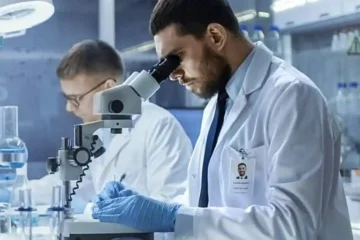Thérapies par cellules souches: A Novel Approach for Myocardial Infarction
Infarctus du myocarde (MI) and cardiomyopathy are prevalent cardiovascular diseases that result in significant morbidity and mortality. Conventional therapies often provide limited efficacy, prompting the exploration of novel treatment strategies. Stem cell therapies have emerged as a promising approach, offrant le potentiel de régénérer le tissu cardiaque endommagé et de restaurer la fonction cardiaque. This article provides an overview of stem cell therapies, leurs mécanismes d'action, essais cliniques, emerging therapies, orientations futures, and challenges in their application for MI and cardiomyopathy.
Mechanisms of Stem Cell Action in Cardiomyopathy
Les cellules souches possèdent la capacité de se différencier en différents types de cellules, y compris les cardiomyocytes. When administered to a damaged heart, stem cells can differentiate into new cardiomyocytes, contributing to tissue regeneration. En plus, stem cells secrete paracrine factors that promote angiogenesis, réduire l'inflammation, and enhance the survival of existing cardiomyocytes. These mechanisms collectively contribute to the potential therapeutic benefits of thérapie par cellules souches in cardiomyopathy.
Clinical Trials and Emerging Therapies
Numerous clinical trials have investigated the safety and efficacy of stem cell therapies in MI and cardiomyopathy. Cellules souches mésenchymateuses (MSC) have been widely studied, showing promising results in improving cardiac function and reducing infarct size. Other stem cell types, such as cardiac progenitor cells (CPC) et cellules souches pluripotentes induites (iPSC), are also being explored in clinical trials. Emerging therapies include engineered stem cells with enhanced regenerative properties and the use of biomaterials to improve cell delivery and engraftment.
Orientations futures et défis de la thérapie par cellules souches
Despite the promising results from clinical trials, plusieurs défis demeurent thérapie par cellules souches for MI and cardiomyopathy. These include the optimization of stem cell delivery methods, améliorer la survie et la greffe des cellules, and addressing the potential for arrhythmias and immune rejection. Future research will focus on refining stem cell therapies, developing novel delivery strategies, et comprendre les effets à long terme de traitement des cellules souches.
Conclusion
Stem cell therapies hold great promise for the treatment of MI and cardiomyopathy. Their potential to regenerate damaged heart tissue and restore cardiac function offers a novel therapeutic approach. Ongoing clinical trials and emerging therapies are paving the way for the translation of stem cell therapies into clinical practice. Cependant, des défis demeurent, and further research is needed to optimize stem cell delivery, improve cell engraftment, and ensure the long-term safety and efficacy of these therapies.


